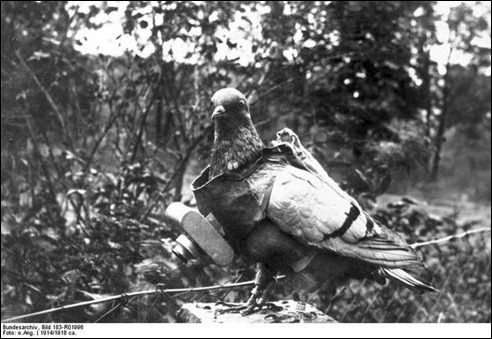World War I surveillance DRONE – or pigeon photography
Posted By RichC on February 5, 2017
Homing pigeons were outfitted with lightweight cameras in WWI with time-delayed shutters for aerial reconnaissance photography, likely the first "drones." They were used very effective as messenger pigeons prior to wireless radio and effectively in communicating behind enemy lines in World War II. Interestingly the Swiss Army continued they military pigeons until it was disbanded in 1996.
The first aerial photographs were taken in 1858 by the balloonist Nadar; in 1860 James Wallace Black took the oldest surviving aerial photographs, also from a balloon. As photographic techniques made further progress, at the end of the 19th century some pioneers placed cameras in unmanned flying objects. In the 1880s, Arthur Batut experimented with kite aerial photography. Many others followed him, and high-quality photographs of Boston taken with this method by William Abner Eddy in 1896 became famous. Amedee Denisse equipped a rocket with a camera and a parachute in 1888, and Alfred Nobel also used rocket photography in 1897.
Homing pigeons were used extensively in the 19th and early 20th centuries, both for civil pigeon post and as war pigeons. In the Franco-Prussian War of 1870, the famous pigeon post of Paris carried up to 50,000 microfilmed telegrams per pigeon flight from Tours into the besieged capital. Altogether 150,000 individual private telegrams and state dispatches were delivered. In an 1889 experiment of the Imperial Russian Technical Society at Saint Petersburg, the chief of the Russian balloon corps took aerial photographs from a balloon and sent the developed collodion film negatives to the ground by pigeon post.

Comments